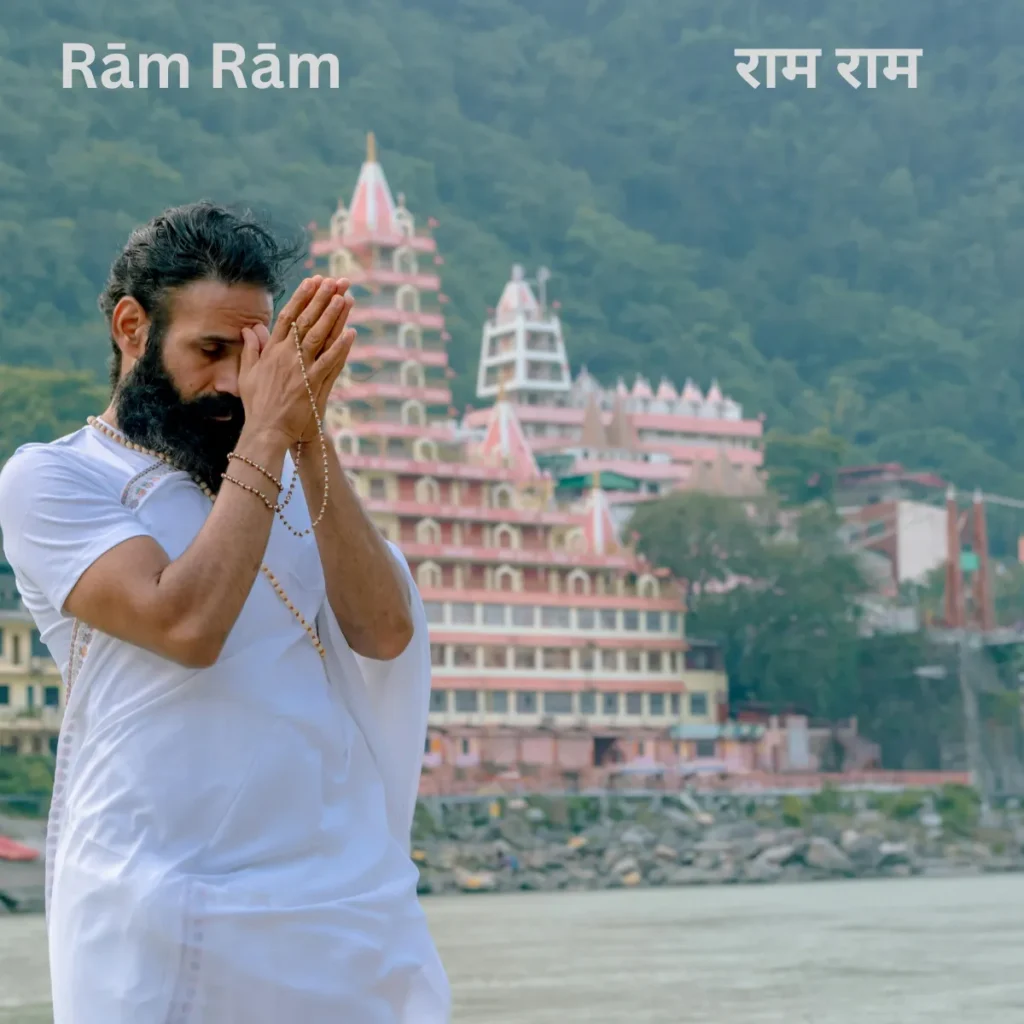How to Say Hello in Hindi is one of the first phrases you should learn if you’re starting with the language. Hindi greetings are not just words; they reflect respect, culture, and warmth.
Whether you’re meeting someone formally or casually, knowing the right way to say hello will help you connect better and leave a positive impression. From traditional greetings like Namaste to casual ones like Hello, each phrase carries its own charm.
Learning these greetings will make your conversations in Hindi more natural and meaningful.
Say Hello in Hindi
15 Ways to Say Hello in Hindi
| No. | Hindi Phrase | Pronunciation | Meaning / Usage |
|---|---|---|---|
| 1 | नमस्ते | Namaste | Traditional, respectful hello |
| 2 | नमस्कार | Namaskaar | Formal greeting, very polite |
| 3 | प्रणाम | Pranaam | Very respectful greeting, often to elders |
| 4 | सलाम | Salaam | Muslim greeting, means “peace” |
| 5 | आदाब | Adaab | Polite Urdu/Hindi greeting |
| 6 | हाय | Haay | Casual, like “Hi” |
| 7 | हेलो | Hello | Direct borrowing from English |
| 8 | क्या हाल है? | Kya haal hai? | Informal hello, like “How are you?” |
| 9 | कैसे हो? | Kaise ho? | Friendly greeting, “How are you?” (casual) |
| 10 | आप कैसे हैं? | Aap kaise hain? | Formal, polite hello with care |
| 11 | सुबह बख़ैर | Subah bakhair | “Good morning” (Urdu/Hindi mix) |
| 12 | शुभ प्रभात | Shubh prabhaat | Pure Hindi for “Good morning” |
| 13 | शुभ संध्या | Shubh sandhya | “Good evening” (formal) |
| 14 | जय श्री कृष्ण | Jai Shri Krishna | Religious greeting (devotional hello) |
| 15 | राम राम | Ram Ram | Traditional hello, common in villages |
Let’s explore 15 meaningful ways to say hello in Hindi, with example conversations and cultural background to help you sound both natural and respectful.
1. नमस्ते (Namaste)

Origin:
Derived from Sanskrit, it means “I bow to you.” It’s one of the most respectful greetings used across India.
Example:
👤 User A: नमस्ते! आप कैसे हैं? (Namaste! Aap kaise hain?)
👤 User B: नमस्ते! मैं ठीक हूँ, धन्यवाद। (Namaste! Main theek hoon, dhanyavaad.)
Use: Universal, respectful; suitable in both formal and informal situations.
2. नमस्कार (Namaskār)
Origin:
A more formal version of “Namaste,” often used in written Hindi or during ceremonies.
Example:
👤 User A: नमस्कार, सर! (Namaskār, sir!)
👤 User B: नमस्कार, कैसे आना हुआ? (Namaskār, kaise aana hua?)
Use: Formal; used when addressing elders, officials, or in speeches.
3. सलाम (Salām)

Origin:
Borrowed from Persian/Urdu, meaning “peace.” Common in Muslim communities and Urdu-speaking areas.
Example:
👤 User A: सलाम वालेकुम! (Salām vāleikum!)
👤 User B: वालेकुम सलाम! (Vāleikum salām!)
Use: Respectful; especially in Islamic culture or Urdu-influenced contexts.
4. सुप्रभात (Suprabhāt) – Good Morning
Origin:
Sanskrit-derived formal way to say “Good Morning.”
Example:
👤 User A: सुप्रभात, मम्मी! (Suprabhāt, mummy!)
👤 User B: सुप्रभात बेटा। (Suprabhāt, beta.)
Use: Formal; used in literature or formal environments, not common in casual speech.
5. शुभ संध्या (Shubh Sandhyā) – Good Evening
Origin:
Also from Sanskrit; “Shubh” means “auspicious” and “Sandhyā” means “evening.”
Example:
👤 User A: शुभ संध्या, अंकल। (Shubh Sandhyā, uncle.)
👤 User B: शुभ संध्या। कैसे हो? (Shubh Sandhyā. Kaise ho?)
Use: Formal greeting; poetic or ceremonial use.
6. क्या हाल है? (Kya hāl hai?) – How are things?
Origin:
A friendly conversational greeting; literally “What’s the situation?”
Example:
👤 User A: अरे यार! क्या हाल है? (Are yaar! Kya hāl hai?)
👤 User B: बढ़िया! तू बता? (Badhiya! Tu bata?)
Use: Informal and friendly; common among peers.
7. कैसे हो? / कैसे हैं? (Kaise ho? / Kaise hain?) – How are you?

Origin:
This question often acts as a greeting. “Ho” is informal; “Hain” is formal/respectful.
Example:
👤 User A: कैसे हो, रोहित? (Kaise ho, Rohit?)
👤 User B: मैं ठीक हूँ, भाई! (Main theek hoon, bhai!)
Use: Very common; context depends on tone and relationship.
8. आदाब (Ādāb)
Origin:
Of Urdu origin, popular among Hindi-Urdu speakers, especially in Lucknow and Hyderabad. It means “respect.”
Example:
👤 User A: आदाब, जनाब। (Ādāb, janāb.)
👤 User B: आदाब। तशरीफ रखिए। (Ādāb. Tashrīf rakhiye.)
Use: Formal, poetic, and elegant.
9. अरे! (Are!) – Hey!
Origin:
An exclamatory word to draw attention; casual and expressive.
Example:
👤 User A: अरे! तू यहाँ क्या कर रहा है? (Are! Tu yahaan kya kar raha hai?)
👤 User B: बस यूं ही घूम रहा था। (Bas yoon hi ghoom raha tha.)
Use: Very informal; common in friendly banter.
10. भाई / दीदी / भैया / बहन – Brother / Sister
Origin:
Used as both a greeting and a respectful form of address.
Example:
👤 User A: नमस्ते भैया! (Namaste bhaiyā!)
👤 User B: नमस्ते बहन! कैसे हो? (Namaste bahan! Kaise ho?)
Use: Adds warmth and cultural respect; very common.
11. राम राम (Rām Rām)

Origin:
Traditional greeting invoking the name of Lord Ram; especially used in rural North India.
Example:
👤 User A: राम राम, काका! (Rām Rām, kākā!)
👤 User B: राम राम, बेटा! कैसे हो? (Rām Rām, betā! Kaise ho?)
Use: Cultural, spiritual, rural; respectful and devotional.
12. क्या चल रहा है? (Kya chal raha hai?) – What’s going on?
Origin:
A more urban, youthful phrase. Equivalent to “What’s up?”
Example:
👤 User A: ओ भाई! क्या चल रहा है? (O bhai! Kya chal raha hai?)
👤 User B: सब मस्त! तू बता? (Sab mast! Tu bata?)
Use: Informal; popular among teenagers and college students.
13. जय श्री राम / जय श्री कृष्ण (Jai Shri Ram / Jai Shri Krishna)
Origin:
Devotional greetings often exchanged among religious or spiritual communities.
Example:
👤 User A: जय श्री राम! (Jai Shri Ram!)
👤 User B: राम राम! (Ram Ram!)
Use: Spiritual greeting; often replaces hello in religious settings.
14. कौन है भाई? (Kaun hai bhai?) – Who’s there, brother?
Origin:
Casual, often used when someone enters unexpectedly.
Example:
👤 User A: कौन है भाई? (Kaun hai bhai?)
👤 User B: अपना ही आदमी हूँ। (Apna hi aadmi hoon.)
Use: Informal, regional tone with friendly edge.
15. नमो नमः (Namo Namah)
Origin:
Ancient Vedic greeting found in Sanskrit texts, especially used by priests and spiritual seekers.
Example:
👤 User A: नमो नमः, गुरुजी। (Namo Namah, Guruji.)
👤 User B: नमो नमः, शिष्य। (Namo Namah, shishya.)
Use: Formal, spiritual; used in temples or religious rituals.
Conclusion:
Learning how to say hello in Hindi is more than just picking up a phrase—it’s about embracing culture and showing respect. Whether you use Namaste in a formal setting or a casual Hello with friends, each greeting helps you connect warmly and naturally. By practicing these simple yet meaningful words, you’ll not only improve your Hindi but also build stronger and more positive connections with native speakers.



